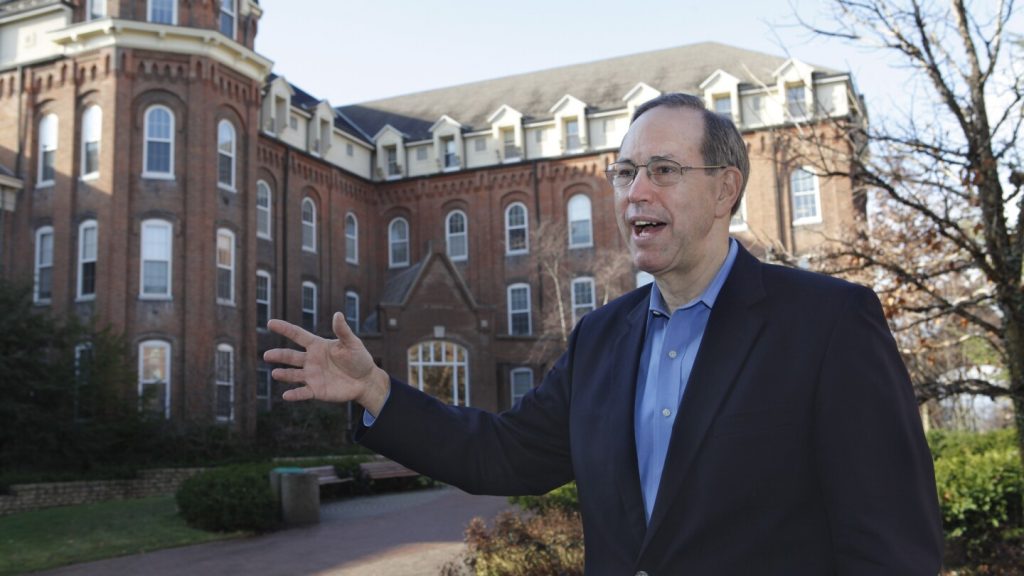Brown’s campaign responded to Taft’s endorsement with a statement from spokesperson Preston Maddock on Sunday. “Senator Brown is honored to have the support of former Governor Taft, as a recognition of his work fighting for Ohio jobs and Ohio values,” the statement read. “Senator Brown will continue to work with anyone who shares those priorities, regardless of party.” Taft’s endorsement of Brown is not his first move across party lines; in 2016, he backed Democrat Hillary Clinton over Trump for president. Brown spoke to Taft’s endorsement in a statement Sunday. “I welcome Bob’s support, as well as the support of anyone who shares my commitment to addressing the issues facing working people in Ohio and across the country,” Brown said. “I’m proud of the work I’ve accomplished with elected officials on both sides of the aisle to strengthen our economy, support Ohio’s workers, and create more opportunity for all Ohioans.”
The endorsement shows a bipartisan effort in the Ohio race, as the former Republican governor throws his support behind a Democratic candidate. This move could potentially sway voters who are not aligned with a specific party, as it showcases a collaborative approach to governance. Brown’s longstanding experience in public office, coupled with his track record of working across party lines, may appeal to voters who prioritize effective leadership over party affiliation. Furthermore, Taft’s decision to endorse Brown over a Trump-backed candidate like Moreno highlights a shift within the Republican Party, where traditional conservatives are aligning themselves with Democrats in select races.
Despite Ohio’s recent trend of leaning towards the right in elections, Taft’s endorsement of Brown indicates a growing divide within the state GOP. The influence of Trump supporters in the party has caused rifts among mainstream Republicans, as seen in Moreno’s primary victory over other candidates supported by top Ohio GOP figures. This endorsement from Taft, a member of a prominent Republican family in Ohio, adds an interesting dynamic to the upcoming Senate race. It will be intriguing to see how voters respond to this development and whether it will impact the outcome of the highly contested election. Brown, known for his advocacy for workers and economic issues, may benefit from the support of a seasoned Republican like Taft, who values experience and effective leadership in government.
As the campaign progresses, it will be essential to monitor how Taft’s endorsement of Brown resonates with voters across Ohio. The state’s diverse political landscape, which includes both Republican strongholds and Democratic-leaning areas, adds a layer of complexity to the race. Brown’s efforts to attract independent and Republican crossover voters could be bolstered by Taft’s backing, especially among moderate and undecided voters. The $400 million-plus contest is setting records in terms of spending, indicating the high stakes involved in this election. Both candidates will need to navigate a challenging political environment and appeal to a broad spectrum of voters to secure victory in November. Taft’s endorsement of Brown may serve as a significant moment in the Senate race, highlighting the importance of bipartisan support and collaboration in addressing the needs of Ohioans.
Overall, Taft’s decision to support Brown over Moreno showcases a willingness to prioritize effective leadership and experience in public office over partisan politics. This move underscores the changing dynamics within the Ohio Republican Party and the broader political landscape in the state. Brown, with his proven track record of bipartisan collaboration and advocacy for working-class issues, may gain momentum from Taft’s endorsement as he seeks reelection in a closely watched Senate race. The outcome of this election will not only impact Ohio but also serve as a barometer for national political trends and the shifting alliances within both major parties. Taft’s endorsement adds an intriguing element to the campaign and reflects the complexities of modern politics, where traditional party lines are increasingly blurred in the pursuit of shared goals and effective governance.


